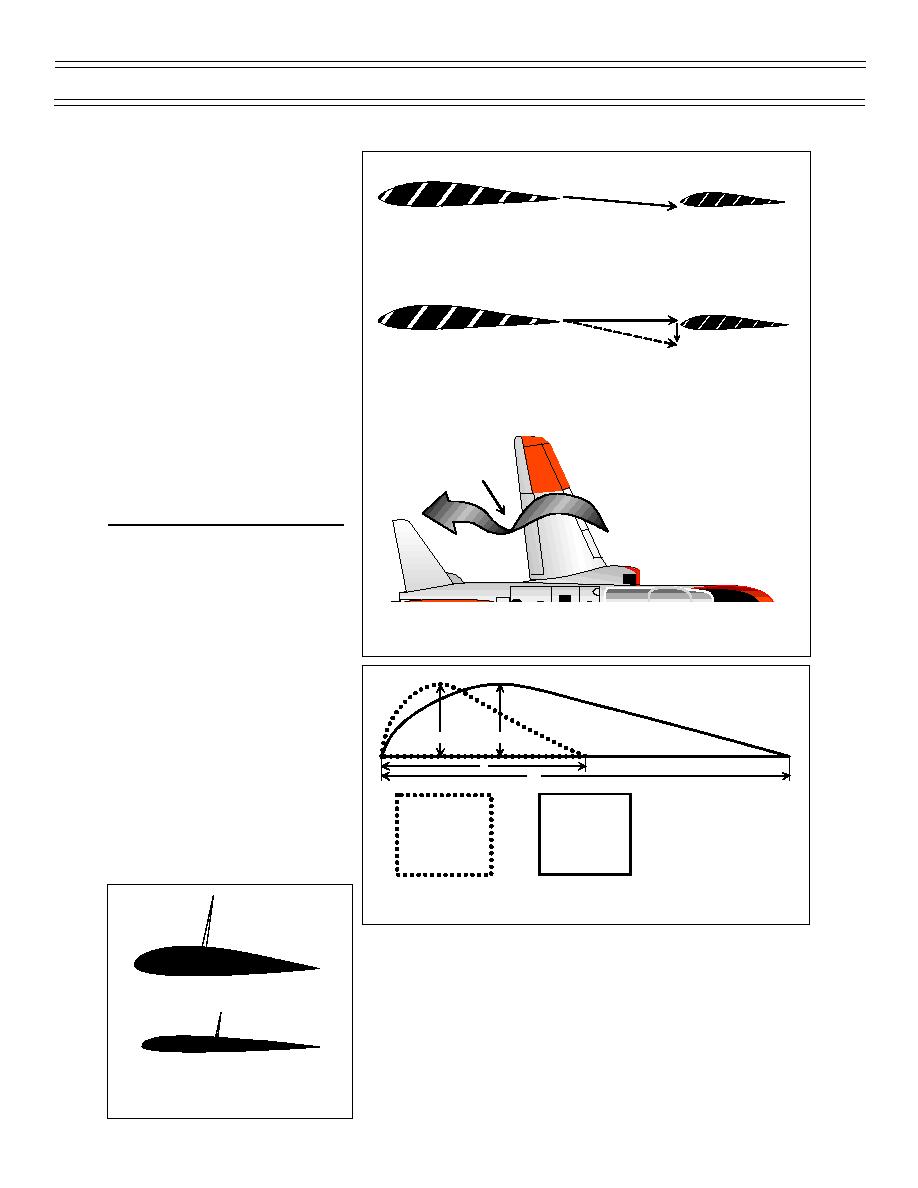
Aero Chapter 02, High-Speed Flight
T-45 Aerodynamics Student Workbook
TRANSONIC PITCHUP
Wing
Transonic pitchup is a sudden and
Horizontal Tail
Typical
sometimes violent pitchup that
Flow
occurs as the aircraft decelerates
through a particular Mach number.
An increase in downwash angle at
the horizontal tail may occur as a
result of a strong midspan vortex
Wing
(Figure 27). The increase in
Horizontal Tail
downwash angle will contribute to
Resul
transonic pitchup as positive
ta
Flow nt
Increased
pressure on the stabilator is
Downwash
reduced. The aft trim or stick
position that was used to counter
tuck under will cause the aircraft to
pitchup suddenly if not relaxed as
stabilator effectiveness is regained.
Transonic pitchup may be great
Vortex
enough to overstress the aircraft.
HIGH-SPEED AIRCRAFT DESIGN
THICKNESS-TO-CHORD RATIO
In order for aircraft to maintain
maneuverability at high airspeeds,
a means of delaying the Critical
Mach Number and compressibility
Figure 27: TRANSONIC PITCHUP
effects on the aircraft is necessary.
One means of increasing Mcrit is by
using an airfoil section of low
thickness-to-chord ratio
(Figure 28). A low thickness-to-
chord ratio or thin airfoil does not
5
5
accelerate the air to the same
extent as a thick or high thickness-
5
10
to-chord airfoil. Compression
waves will form at a higher Mach
number and will not be as strong
T/C RATIO
T/C RATIO
with the lower thickness-to-chord
1:1
1:2
ratio wing.
Figure 28: THICKNESS-TO-CHORD RATIO
In fact, wave drag varies as the square of the thickness-to-chord
ratio. At supersonic speed, wave drag in the upper figure
(Figure 29) is four times greater than the wave drag in the lower
HIGH THICKNESS -TO-CHORD RATIO
figure. However, an excessively low thickness-to-chord ratio would
lead to extremely high stall, takeoff, and landing speeds.
Additionally, the reduction in thickness-to-chord wings is limited by
a lack of structural strength. Another factor that must be considered
LOW THICKNESS-TO- CHORD RATIO
in aircraft design is an extremely thin wing provides no space for
Figure 29: THICKNESS-TO-
either landing gear or fuel tanks.
CHORD RATIO
Page 18
(7-99) Original



 Previous Page
Previous Page
